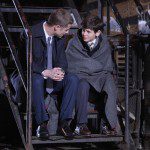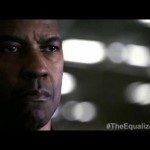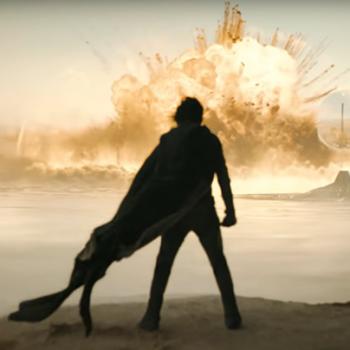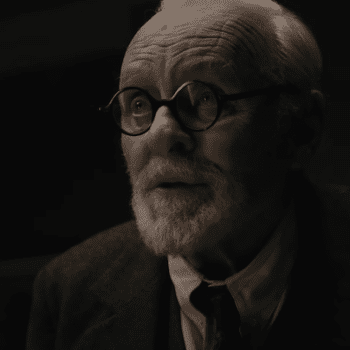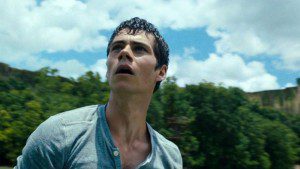 Life just doesn’t make sense sometimes.
Life just doesn’t make sense sometimes.
Just ask Thomas (Dylan O’Brien) from The Maze Runner. One moment he’s … well, he doesn’t quite know what he was doing, come to think of it. But whatever. The next, he’s zipping up, up, up in a super-fast, industrial elevator with some sort of pig. And when he gets to the top, he finds himself in the midst of a green glade surrounded by a bunch of teen boys. And none of them know that much more about where he is than he does.
Now, these kids aren’t completely clueless. Thanks to leader Alby (Aml Ameen), they’ve all got jobs. They all adhere to a few basic rules. They know how to survive in the glade, and that’s not nothing. But they sure don’t know where they came from, what they’re doing there or, most importantly, how to get out. See, the whole glade is surrounded by massive gray walls. And beyond those walls is a bewildering maze filled with drops and dead ends and moving walls. Worst of all are the Grievers—nasty half-organic, half-mechanized spiders who like to “sting” any teen who might stumble into their concrete web.
But while many of the boys are satisfied to spend the rest of their days in the glade, Thomas has other ideas—cyborg spiders or no.
The Maze Runner, based on a bestselling book by James Dashner, may have been intended to be a dystopian metaphor for growing up. Childhood would be the comfy-but-constricting confines of the glade, adulthood would be the frightening and unknown world beyond. Some might want to stick around the glade forever, but in the end, it’s not possible. “We don’t belong here,” Thomas says. “This place isn’t our home.”
It’s a line that recalled a quote from C.S. Lewis’ classic Mere Christianity: “If we find ourselves with a desire that nothing in this world can satisfy, the most probable explanation is that we were made for another world.” Which got me to thinking about another potential twist to The Maze Runner: Thomas and the others are taking not just a literal journey through the maze, or a metaphorical one to adulthood, but an inherently spiritual one: In running through the maze, they are searching for meaning.
When people have near-death experiences, one of the most common things they report later is rushing through some sort of tunnel toward a light. This tunnel-like imagery has been interpreted by some as a weird sort of memory of being born … going from womb to the open air. And in movies, tunnels can often symbolize the moving of the character from one world, or one type of existence, into another. Thomas, in a way, was being “born” into a new reality.
Thomas was going through a birth experience, in a way (which fits nicely with the whole “growing up” metaphor, too). And there are some similarities between Thomas’ first impression of the glade and our own “confusion,” if you will, when we’re ready to start living. For a lot of us, life can sometimes feel a little glade-like. We don’t know what this place is initially. We don’t know what it’s for. We’re not given instructions on what we’re to be about once we get here. We don’t remember where we came from. We come into the world clueless and frightened. No wonder so many of us cry at first.
But as time goes on, we learn the ropes. Like Alby, our parents and others show us how to live in this strange world we find ourselves in. They teach us the rules we need to get along. They encourage us to work hard. They warn us about the world’s big dangers. They pass on the lessons that they learned from their parents, who learned it from theirs and so on. But they, like Alby, arrived on this earth just as clueless as we were.
With the help and guidance of others, we find a place in our own glade. But there’s a sense that there’s more to life than that. Every now and then, we wonder whether this is really our home. Whether there’s more out there than what we see.
“What if we were sent here for a reason?” Teresa, another newcomer to the glade, asks Thomas. And we ask ourselves the same thing.
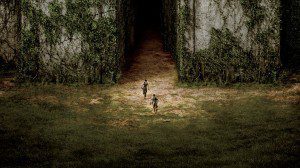 And so we, like Thomas, look more closely at our world, and it seems to us that it was built. Created by some unknown hand. We didn’t land in this world by whim, but rather by design. And so, as we try to ascertain what that design might mean, we poke and prod and find a door that leads beyond … and a confusing maze beyond that.
And so we, like Thomas, look more closely at our world, and it seems to us that it was built. Created by some unknown hand. We didn’t land in this world by whim, but rather by design. And so, as we try to ascertain what that design might mean, we poke and prod and find a door that leads beyond … and a confusing maze beyond that.
For some, faith comes pretty easy. But for others, like me, it can feel a little maze-like. We ask ourselves unanswerable questions. We run into dead ends. And yet even in the midst of the maze, we still see a design in play, a hand at work. We know the glade holds no answers for us, no real freedom, so we brave the maze. And eventually, God willing, we find what we’re looking for.
Now, this analogy is hardly perfect. I won’t say too much about the end of The Maze Runner here—the movie’s still relatively new, and I’d hate to spoil it for anybody. But what measure of “freedom” they find here leads inexorably … to a sequel.
But on some level, it does reflect a bit of my own confused but thrilling walk through faith. And the freedom we find at the end of our maze is—while not the comforting security the glade might offer—is a much more hopeful, bracing sort of freedom. We find the sort of life that the glade cannot provide, because it was never designed to. We find purpose that the glade can never offer.


